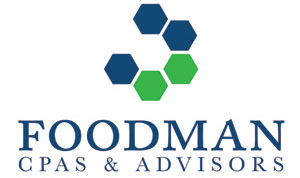The US Treasury reports that it is expecting the tax gap to rise to approximately $7 trillion over the course of the next decade if left unaddressed. In May 2021, the US Department of the Treasury issued the “THE AMERICAN FAMILIES PLAN TAX COMPLIANCE AGENDA” describing the Biden Administration (Administration) initiatives for restoring IRS enforcement capability and for closing the existing and projected “tax gap” (the difference between taxes owed to the government and actually paid).
Reestablishing IRS Resources is the first step of in Administration efforts for restoring IRS enforcement capability and a multi-year commitment to rebuilding the IRS. This involves spending nearly $80 billion on IRS priorities over the course of the next ten years. It includes, but is not limited to, employing new specialized enforcement staff, modernizing antiquated information technology, and investing in meaningful taxpayer service. It is worth mentioning that the additional resources will go toward enforcement against those with the highest incomes, and audit rates will not rise relative to recent years for those earning less than $400,000 in reportable income.
The second step in President’s Biden compliance agenda addresses transparency of “opaque income streams”, including proprietorship and partnership business income. The IRS and the Government Accountability Office (GAO) have reported that transparent information reporting is one of the best ways to increase the overall compliance rate, and that existing evidence confirms that introducing third party reporting requirements is effective.
Currently, business income is subject to limited information reporting. Reporting of gross receipts exists for only certain types of revenue, and there is no information reporting on deductible expenses. The Report asserts that this is why the tax gap for partnership, S-corporation, and proprietorship income is estimated at around $200 billion annually with the net misreporting percentage for certain income categories exceeding 50%. The Report recognizes that financial institutions already provide certain third-party reports to the IRS, that they house a great deal of valuable information not currently automatically reported to the IRS, and that “leveraging this information” is a proven way to improve compliance.
Third party information reporting is already provided on primary income streams for the majority of US Taxpayers via wage, pension, and unemployment income. The Administration proposes enhanced information reporting on financial account information that would increase the visibility of reportable gross receipts and expenses to the IRS. It seeks to make tax administration “more equitable” by subjecting financial flows, particularly those that accrue disproportionately to those at the top of the income distribution, to third-party reporting as well.
The new reporting regime would build from the framework of the Form 1099-INT reports that US Taxpayers already receive from financial institutions when more than $10 in interest from a bank, brokerage, or other financial institution is earned. The plan stipulates that financial institutions would report additional data on the financial accounts of these existing information returns. Specifically, the annual return would report gross inflows and outflows on all business and personal accounts from financial institutions, including bank, loan, and investment accounts but carve out exceptions for accounts below a low de minimis gross flow threshold.
Other similarly situated accounts within to financial institution accounts that would also be covered under this new reporting regime are:
- Payment settlement entities (required to report gross receipts and gross purchases)
- Foreign financial institutions
- Crypto asset exchanges and custodians.
Financial Institution are already the subject of extensive reporting requirements. While the Administration stated that it would seek out ways to reduce any new burden on financial institutions associated with these new information reporting requirements, additional information reporting requirements will undoubtedly add additional costs, complexities, technology, and manpower challenges to an already over-complex tax reporting structure.
Financial institutions must have ought to have their Corporate Governance affairs in order before the new reporting regime takes effect in the 2023 tax year.
Is your Financial Institution’s BSA/AML compliance program currently in place reasonably designed and risk based?
Is your Financial Institution ready for more reporting requirements?
Who is your Corporate Governance Expert? ©





